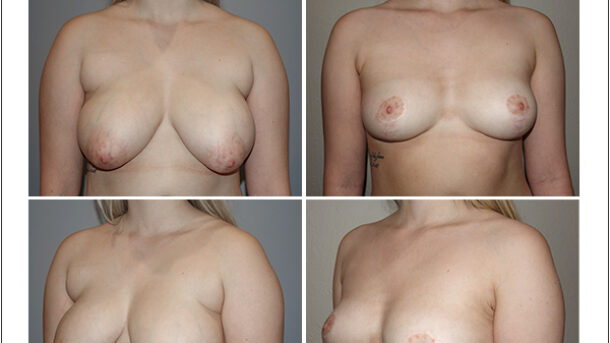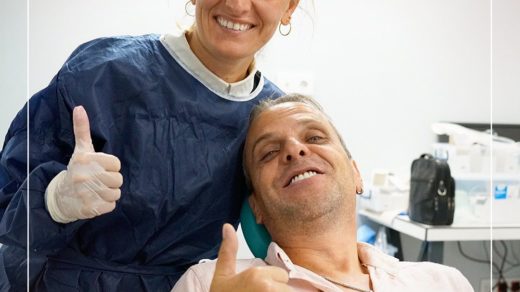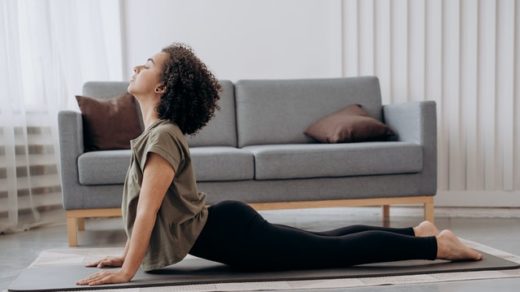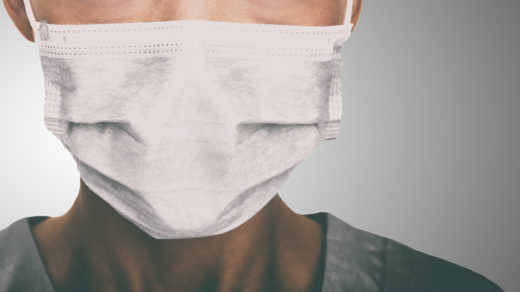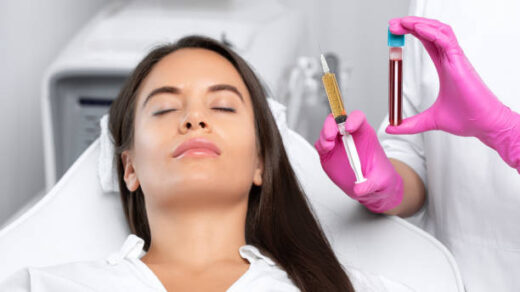Recovery Tips after a Breast Reduction
A woman’s breasts are one of the most important external identification of her femininity. No matter the size or the shape, they are all naturally imperfect, yet equally fantastic. Unfortunately, global studies have shown that more than 70% of women are unhappy with how their breasts look, and many see breast cosmetic surgery as the logical next step. When it comes to breasts, bigger is not always better. Big heavy breasts can cause back, neck, and shoulder pain, and might look disproportional with the rest of your body. This is why many women opt for breast reduction surgery. A Breast reduction improves your natural proportions and gives you smaller, symmetrical, youthful, and more feminine breasts.
When performed by the right plastic surgeon, breast reduction surgery is a safe, long-lasting procedure, with an overwhelming number of patients being ecstatic with their final results. However, before deciding to undergo any form of cosmetic breast surgery, you should be well aware of the recovery process, and how bruising and swelling are part of it.
Get the Breast Reduction Surgery guide!
Read more about Breast Reduction
Continue reading this article to learn more about tips and tricks to reduce bruising and swelling after breast reduction.
What is Breast Reduction?
Cosmetic breast surgery aims to reshape normal breast anatomy and enhance its overall aesthetic appeal. However, contrary to popular belief, not all women, want larger breasts. In fact, large breasts are a common cause of sore backs and necks and abnormal posture. Moreover, excessively large breasts can be disproportional with the rest of your physique, and are not always aesthetically appealing.
Breast reduction or reduction mammoplasty is a type of cosmetic surgery that reduces the size of your breasts by removing excess breast fat, glandular tissue, and skin to create a size that is more in proportion to the rest of your body. This alleviates the discomfort that heavy, large, sagging breasts can cause. This surgery can also be done in conjunction with a breast lift and even implants.

What to Expect During Recovery from Breast Reduction?
Breast reduction is usually an outpatient procedure that is done under general anaesthesia. You should expect to receive the all-clear by your care team a few hours after your mammaplasty, at which point you will be able to go home.
Your first week, especially the first three to five days are the most uncomfortable. Pain, bruising and swelling are at their peak during this time. Swelling is the body’s natural response to your boob reduction. After a week, any sutures and drains will be removed. You’ll start to notice that most of the pain, bruising, and swelling have begun to significantly reduce by this stage. Moreover, around this time many women are comfortable enough to return to their desk jobs. However, those with physically demanding jobs will need more time to recover.
In the next few weeks following your breast reduction, the pain, bruising, and swelling will be completely gone. Your surgeon will encourage you to ease back to your normal daily routine around the two-week mark.
You will need to wait a little longer before you resume more strenuous jobs and activities. At least three weeks, however even then it is advisable to wait until full recovery.
It takes six to eight weeks to fully recover from your reduction mammaplasty, but you’ll be able to enjoy the perks of your young and perky breasts a lot sooner. Unlike other cosmetic surgeries, boob reduction and lift have a relatively short recovery period, with only bruising and swellings being of real discomfort.
Why Do Bruising and Swelling Occur After Breast Reduction?
During any cosmetic breast surgery be it breast augmentation, breast reduction, or breast lift, there is a certain level of breast tissue manipulation. Bruising and swelling are your body’s natural response to any form of trauma and are normal after your cosmetic surgery.
Bruising after breast reduction occurs as a result of incisions and other adjustments made in the breast tissue. These injuries can damage nearby blood vessels and cause blood to pool out under the skin and into one area, causing the black/purple discolouration you see on your skin.
Similarly, swelling (edema) after breast reduction is a result of trauma done during the procedure. This causes the release of chemicals from damaged cells that increase the absorbency of blood vessels in the area of injury. Fluid accumulated inside the blood vessels, along with white blood cells and other chemicals helps start the healing process. This is also known as inflammation.
How Long Do Bruising and Swelling Last After Breast Reduction?
The extent and duration of bruising and swelling after reduction mammaplasty correlates with;
- The extent of the surgery
- The amount of tissue that is removed,
- And how skilled your plastic surgeon is.
For most patients, bruising and swelling reach their peak approximately three days following your breast reduction. Swelling will significantly decrease approximately one-week post-surgery. Furthermore, any remaining bruising and discomfort should be minimal by this stage.
The bulk of the remaining swelling will have almost completely disappeared by six weeks post-surgery. Any swelling remaining after this point will be minor and will disperse on its own after two to four months.
Best Ways to Reduce Bruising and Swelling After Breast Reduction
Bruising and swelling are the major contributors to your overall discomfort during your boob reduction recovery. Unfortunately, swelling can last up to several weeks after your procedure, despite it waning in intensity over time. Below are some of the best ways to deal with bruising and swelling after reduction mammoplasty and/or mastopexy;
1. Compression Garments
After waking up from your boob reduction you’ll most likely notice you’re wearing a medical compression bra. The compression provided by support bras, tapes, or bandages helps accelerate the healing process and is absolutely necessary in the first month or so following your breast surgery procedure.
Compression can prevent bleeding and stop blood from seeping out of your blood vessels and underneath your skin, thus reducing your bruising. It also reduces swelling by promoting blood circulation to vital areas and flushing out chemicals that accumulate near your breast surgery incision sites. This further speeds up your healing process after your boob job.
2. Cold Compresses
In the first 3 days after your breast reduction, apply cold compresses like towel-covered ice packs or bags of frozen peas on your surgical site to reduce swelling. Do so at 15 minutes intervals, with 20-minute breaks in between, several times a day.
The cold will cause your blood vessels to constrict, limiting fluid and blood leakage. This not only decreases your swelling but also decreases the size and spread of your bruises. Take care to avoid applying any cold compresses directly onto your breast reduction incisions, as this can cause severe irritation to your sensitive skin.
3. Good Night’s Sleep
Having good sleep hygiene is an integral part of any cosmetic procedure recovery process. Good sleep hygiene does not only involve having eight hours of sleep every night but it also depends on the position you sleep in.
In the first two weeks following your cosmetic breast surgery, your plastic surgeon will instruct you to sleep on your back, with your upper body elevated at a 30 to 45 degrees angle for safe and speedy healing. This position allows your breasts to be in a relaxed position, with minimal straining on your incisional sites. It causes your blood to shift away from your tender new breasts, not only reducing your bruising and swelling but also alleviating any pain or soreness felt post-breast surgery.
4. Healthy Diet
Maintaining a healthy well-balanced diet is essential for your body’s healing process. This includes restricting your salt intake, which can otherwise cause your body to retain fluid, worsening both your bruising and edema.
Having a diet rich in Vitamin K is also important, as it encourages your blood to become “thicker”, thus preventing any further bleeding and worsening bruises. Leafy greens such as spinach and kale are prime examples of Vitamin K-rich foods.
5. Hydration
It may come as surprising but drinking lots of water and staying hydrated actually help manage swelling after breast surgery. The more your drink, the lesser the need for your body to trap water inside its tissues.
Hydration also enhances your blood circulation, helping nutrients and blood reach your injured breast tissue for a faster recovery. It is advised that you drink 2 liters of water daily after your breast reduction.
6. Medication
After your reduction, your plastic surgeon will prescribe you a list of medications that need to be taken. Other than pain relief medication, this list may include Arnica and Arginaid.
Arnica, also known as “wolfsbane” is a herb-derived tablet that has been shown to decrease both bruising and swelling in the week following your cosmetic breast surgery.
Arginaid on the other hand is an oral supplement that contains Vitamin C, E, and Zinc. It is designed to promote wound healing.
7. Red LED Light Therapy
Red light-emitting diode (LED) therapy helps break down bruises faster for those who wish for faster recovery following breast reduction. Studies have shown that LED phototherapy decreased the time of bruising resolution by up to one-half compared to those who opted without it. It does so by penetrating your skin tissue layers and encouraging the formation of new blood vessels.
Other frequently asked questions about bruising and swelling following cosmetic breast surgery:
When should I get a bruise checked?
- Bruising is normal after any cosmetic procedure, including breast surgery, and shouldn’t be a cause of concern.
- If you are on any blood thinners or have a known bleeding disorder, you should monitor your bruises closely.
- Any worsening of bruising associated with excessive swelling or persistent bruises (more than two weeks) should warrant a visit to your plastic surgeon.
Can pineapple help with bruising and swelling?
- Pineapples contain a mixture of enzymes called Bromelain, which has been found to have anti-inflammatory properties that help reduce bruising and swelling after your cosmetic breast surgery.
- Pineapples also contain Vitamin C and other minerals that can boost your immunity and speed up your healing process.
Does toothpaste reduce bruising?
- Toothpaste is said to help break down blood clots and increase blood flow, reducing the intensity of your bruises. And while home remedies are encouraged, there is no evidence to support that claim. In fact, toothpaste contains a lot of irritants that can exacerbate your wounds and hinder your cosmetic breast surgery healing process.
What cream is good for bruising?
- Arnica can be found in ointment or gel form, and it is well known for its anti-inflammatory and healing properties. It reduces both bruising and swelling duration.
- Other topical creams that promote healing include Vitamin K, Vitamin C, and Aloe Vera.
- Avoid applying any creams directly on your breast surgery incisions in the first days following your procedure unless instructed otherwise.
Recovery after any cosmetic procedure can be a little bit annoying, however, the results are well worth it.
Coco Ruby Plastic Surgery has some of the best accredited and highly experienced plastic surgeons in Melbourne. They will devise a plan specifically tailored to meet of your aesthetic needs and provide you with the best cosmetic breast surgery experience: starting from your first consultation appointment and up to your final follow-up, and all throughout your recovery process.
